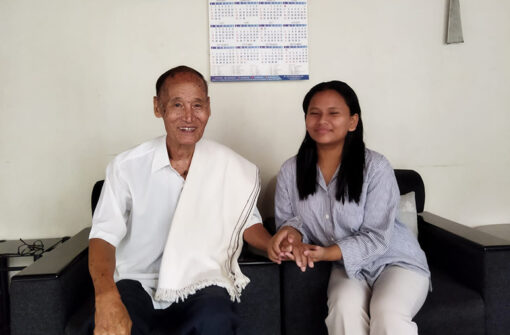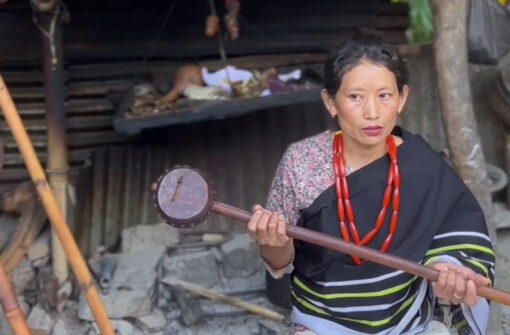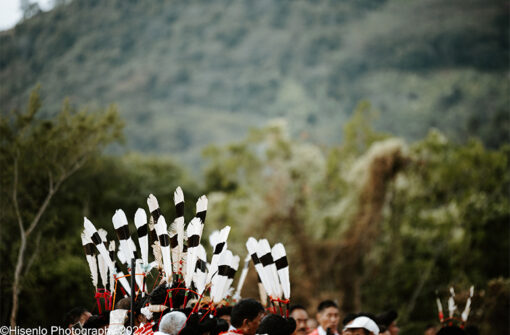Title: Traditional marriage customs of the sumi tribe: A study on the bride price system
Language: Sumi
Description: Since time immemorial, the fore parents of Sumis have a peculiar practice of bride price custom when a man and women gets married. This understanding is beyond the contemporary practice which have mislead many people. The practice of bride price among Sumis is to honour woman for living her life with integrity, good morality, uprightness and the immeasurable value or worth she exhibit.
When a man and woman loves each other and decides to get married, first, both the families exchanges a word for marriage through a common messenger. When the approval comes from both end, the families along with Goan buras and some guest witness are called to finalize and fix the marriage with a feast simultaneously.
In tuluni, the betrothal families exchanges gifts and host a feast as a celebration for their to be in-laws. Both the families cuts a pig and sends half pig along with a head to eachother. After the exchange of gifts, the girl family invites their to be son in-law and families for feasting and a man’s worth is judged or decided by families by the amount of meat he consume. Hence, different wooden plates are set for rice, meat and other side dishes for their son-in-law and he has to eat in the presence of their families and guest witness to determine his worth.
The boy family also host the same kind of feast with the same spirit. If the boy and girl were not able to eat up the given portion of meat, they are to take back the leftover meats to their home and share the portion with their aunties, uncles, and siblings respectively as a sign of sharing blessings.
In case of separation between a married couple, both the families along with the Goan Buras and the guest witness are called and sat for discussions. Here, they deliberate on whose fault the separation is taking place and a punishment or penalty is imposed accordingly.
There is no definite origin of this bride price; however, the research shows that between 1915-1922, the highest bride price paid was to a daughter of a man named Ghukiya. Her bride price consists of one tin can of elephant bones, 100 rupees and altogether 50 heads of cows, mithun/gayal, and pigs. These amount in today’s context equals a lot of money.
This bride price is not fixed but rather depends on the social domain of each family. The last and final decision before the wedding is, 1 chicken and a handful of kidney beans is given to both man and the woman’s commander of working groups. (Agriculture was the only source of earning in ancient days and thus the men and women are divided into groups with a leader. This leader leads his group and work in turns in different fields). And 2 rupees is given as a petticoat stripping price to certain woman.
Thus, the bride price among sumis stands out from others, honoring women of their worth.
Format & Duration: Video: 8 min, 53 secs
Date of Recording: 10/24/2025
Date of Upload: 20 November 2025
Performer: Hevukhu Yeptho
Creator: Honi N Yeptho
Publisher: Tetso College, Dimapur
Note: NA
Cite this work
Yeptho, Honi N . 2025 . Traditional marriage customs of the sumi tribe: A study on the bride price system . ( Narrated by Hevukhu Yeptho ) . Sovima: NEIIPA, Tetso College . (https://neiipa.in/audio/traditional-marriage-customs-of-the-sumi-tribe-a-study-on-the-bride-price-system/) . Accessed: (12-Dec-2025)




